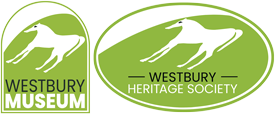Education.
Before the Education Act of 1870 made elementary schooling compulsory between the ages of 5 and 12, children in Westbury received an education in various establishments. If they worked in a factory they were supposed to have two hours of lessons a day. Some would have benefited from the bequest of John Matravers who left £1000 in 1814 to establish a school for boys and girls. In 1830 this was in a room on an upper floor of Westbury House. Later some dividends from the charity were paid to the British and Foreign School Society so that by 1856 60 boys and 60 girls were in school.
Schools were mainly run by charities. The British and Foreign School Society ran non-denominational “British” schools. “National” schools were run by the National Society for Promoting Religious Education and provided instruction in accordance with the teaching of the Church of England.
Many Victorian school buildings survive in Westbury. Perhaps the oldest in Leigh Road was the British school for girls and infants. The building at the bottom of Newtown was originally a National school for both boys and girls, but by the 1870s the girls and infants had moved to the new schoolroom in Church Lane. In 1874 the boys’ British school moved across Bratton Road from the Athenaeum to the schoolroom in the new Laverton Institute. In 1885 the infant school also in Bratton Road, the gift of mill owner Abraham Laverton, opened.
After 1870 little probably changed in Westbury as the voluntary schools were able to continue to operate without the creation of a School Board. In 1902 the Balfour Education Act gave Wiltshire County Council responsibility for schools, although transfers to the new education authority didn’t happen immediately. The Laverton Institute school transferred in 1907 and the infant school not until 1928.
Westbury Senior Council School was created in 1925 based around the former British school building in Leigh Road. The school expanded gradually over the years and became Westbury County Secondary Modern School in 1947, then Matravers when comprehensive education was introduced in 1974.
With the creation of the senior school for children over 11, primary education was reorganised. The school at the Laverton Institute closed and the juniors moved to the school in Church Lane. For the next decade or so this was the pattern for schools in the town. World War Two brought evacuees to the town and the school population fluctuated. Other buildings were used including the Church Institute in the churchyard.
As the post-war baby boomers started school, the infant school had to make use of the old school at the bottom of Newtown. By the late 1940s 90 children were being taught with just a screen between the two classes. The building had gas light, no hot water and outside toilets. As the children moved on the junior school began to suffer from overcrowding.
By the 1950s residents were complaining about the standard of school accommodation. The junior school was spread through several buildings in the town, including an old schoolroom in Alfred Street. The problem was finally solved when the new junior school opened in Oldfield Park in 1958. The older pupils from the infant school moved to the building in Church Lane. The whole school moved to new premises in 1971.
An 1835 report recorded six schools in Westbury Leigh. Mrs Phipps was a benefactor of a school which amalgamated with another in 1859 to become the village’s National school. A new school building opened in 1885 and was replaced by the current school in 2004.
Over the years a number of other schools have come and gone in Westbury. Towards the end of the nineteenth century a technical school was set up in Church Street, paid for by W H Laverton. Subjects taught included chemistry and art, and there was boarding accommodation for 8 pupils. Various private schools have existed in the town. Leighton House became Victoria College, a boys’ boarding school from 1921-1936. For many years in the late nineteenth century Miss Preece ran a boarding school at The Vineyards in Edward Street and advertisements also exist for a school run by the post master Isaac Eyers and Belle Vue School run by Mr Bussell in Bratton Road. In the late 1920s Bella Vista House in Warminster Road housed a small private school.

